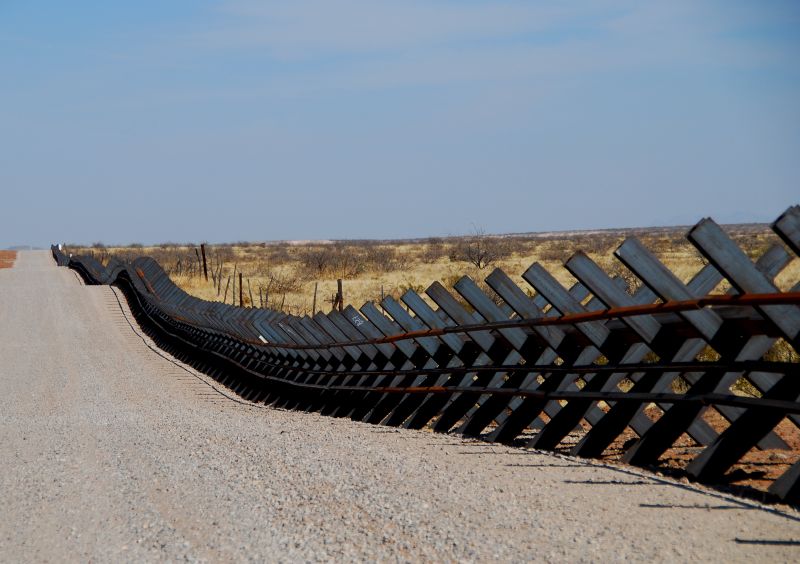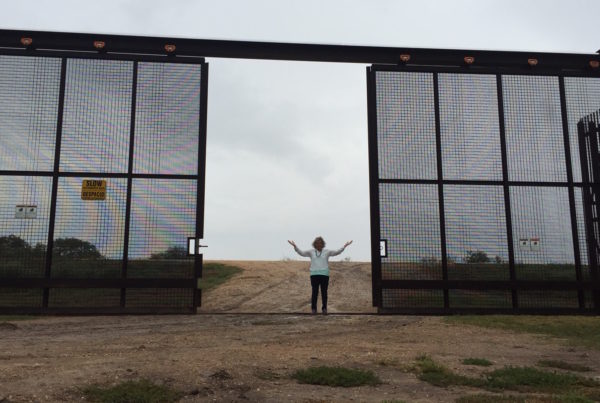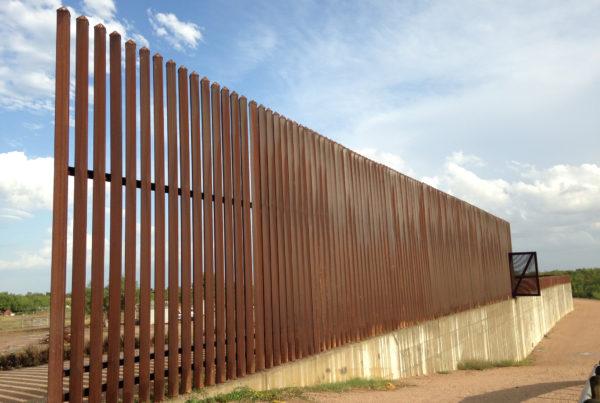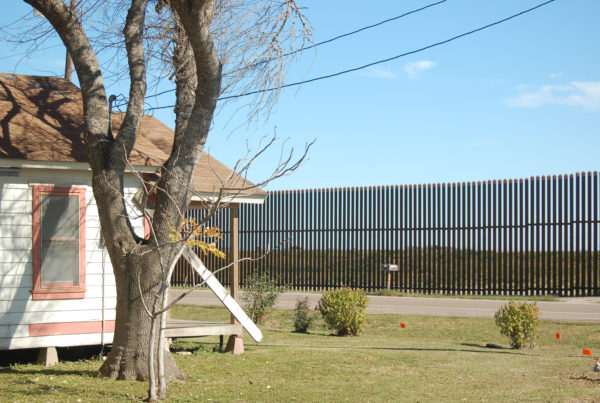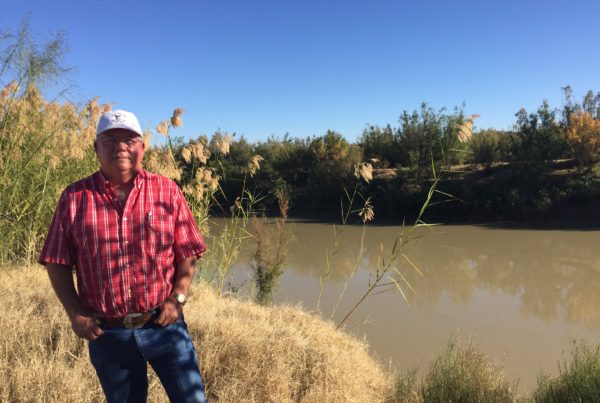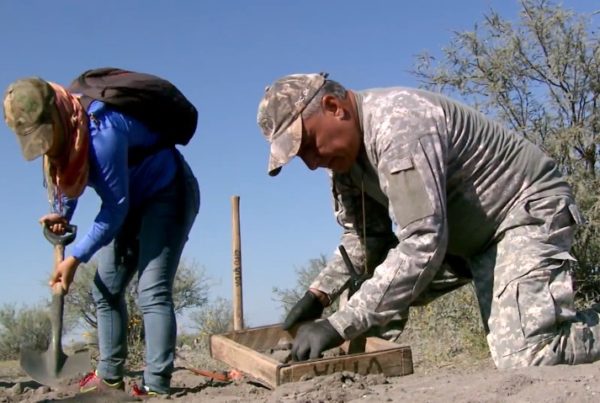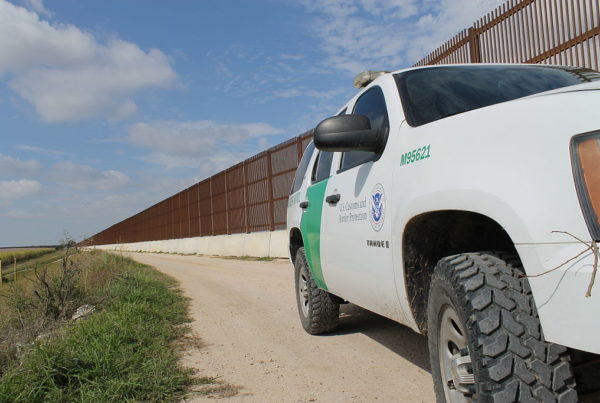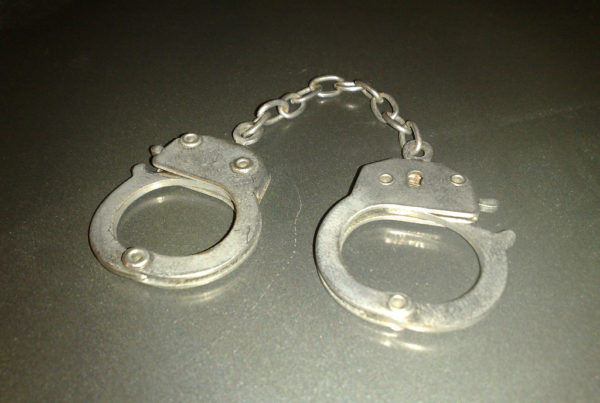The United States-Mexico border is 1,933 miles long. Along that border, the U.S. already has 650 miles of wall and fencing of all types.
Landing mat fencing is made of corrugated steel welded to steel pipes buried deep into the ground. Normandy fencing, in the shape of upright Xs, is used to impeded vehicles. Anti-ram fencing can extend 6 feet deep to deter tunnelers. Bollard fencing is built at small enough intervals to let wildlife through – and sometimes humans.
The border barrier is also made out of picket fencing, concrete panels, and steel and wire mesh fencing. Some parts of the current barrier are meant to deter both humans and vehicles, other parts easily could let people pass through. The border also has an invisible wall with cameras, sensors, and drones to detect crossings.
President-elect Donald Trump built part of his election campaign on the idea of extending these efforts to keep people from illegally crossing into the U.S. with a full wall. He has said both that it needs to be a wall and that some fencing would be allowed. Other than that, the public has yet to see a plan for the wall from his incoming administration, except that Trump said construction would cost about $10 billion and Mexico would pay for it.
He has said both that it needs to be a wall and that some fencing would be allowed. Other than that, the public has yet to see a plan for the wall from his incoming administration, except that Trump said construction would cost about $10 billion and Mexico would pay for it.
But experts like Doris Meissner say that to fully realize this project, the price tag would be much higher.
Meissner is the former commissioner of the U.S. Immigration and Naturalization Service and is a senior fellow at the Migration Policy Institute. She says there isn’t much of a difference between building a wall and allowing fencing.
“I think the terminology ‘wall’ brings with it a connotation, perhaps, of something more formidable,” she says.
The current walls and fencing across the country’s southwest border with Mexico have been effective, Meissner says, but not just because of the physical barrier.
“The fencing has been a very important part of the overall border enforcement buildup that the country has invested in, but needs to be used strategically,” she says. “The fencing contributes to an infrastructure combined with personnel and lighting and building of roads in ways that create an entire system for enforcement.”
So what are the logistics Trump needs to address in order to realize his wall? He’ll have to look at who will build it, what the cost will be and the infrastructure that goes with protecting the border.
Meissner says the border patrol has traditionally worked with the military for construction of barriers in order to reduce costs. The Military uses the border areas as training opportunities for recruits. But other than that, private contractors would have to be hired to build more barriers, something which Meissner says would be a “major contracting endeavor.”
“Fencing is the single most expensive intervention,” Meissner says. “On average, [it’s] $3 million a mile. The cost estimates now for the president-elect’s proposal would … be between $15 and $25 billion dollars.”
Contractors wouldn’t just be building the physical barriers. They’d also have to build ways for patrol agents to access the wall.
“When you build fencing, you also need to build roads,” Meissner says. “And most of the areas that are not fenced today are very remote, so there would need to be a considerable amount of road building that accompanies it. A major investment.”
But Meissner says there is one question that Trump should be asking before he embarks on this project:
“You have to ask what the return on that investment would be. Will that really pay off in considerably better enforcement results?”
Written by Beth Cortez-Neavel.


